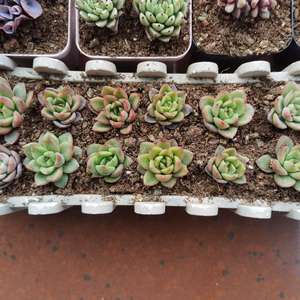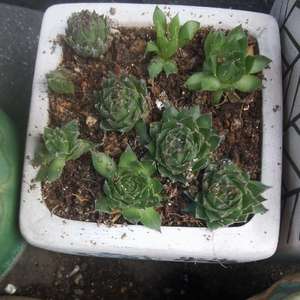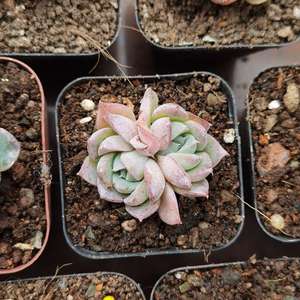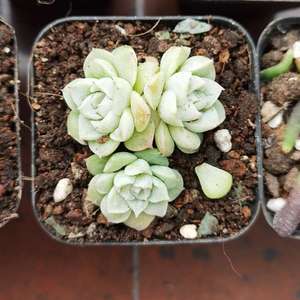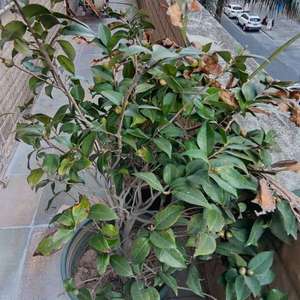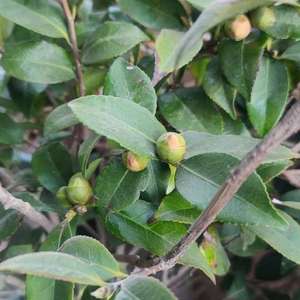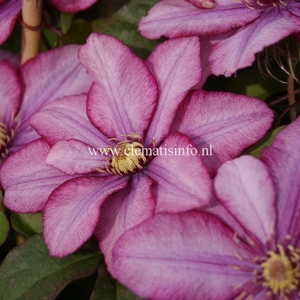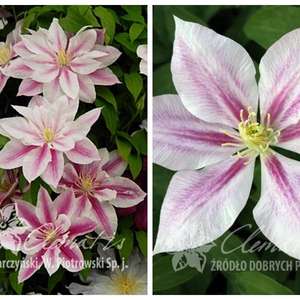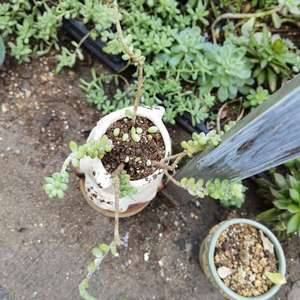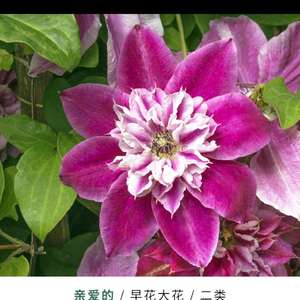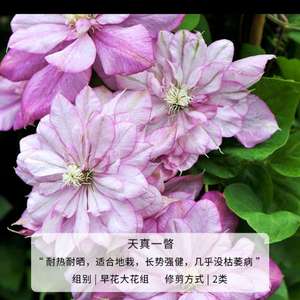文章
Miss Chen
2021年12月23日

Butterfly weed is a must-have plant for gardeners looking to coax the namesake winged insects into the garden. This clump-forming perennial grows from tuberous roots to a height of 1 to 2 feet and is characterized by glossy-green, lance-shaped leaves and clusters of bright orange-to-yellow blooms that are rich with nectar and pollen. A type of milkweed, butterfly weed is generally planted in late spring after the soil is workable. It is fairly slow to become established and may take as much as three years before it flowers. When it finally does flower, its clusters of bright orange-yellow flowers will display from late spring until late summer. Unlike other milkweeds, butterfly weed does not have caustic milky sap, but it does produce the characteristic seed pods that release silky-tailed seeds to disperse on the wind.
Butterfly weed is considered mildly toxic to humans and to animals.1 But because it has much lower levels of the toxic sap found in standard milkweed, butterfly weed is regarded as a safer plant in homes with children or pets.
Common Name Butterfly weed, butterfly milkweed, pleurisy root, orange milkweed
Botanical Name Asclepias tuberosa
Family Asclepiadaceae
Plant type Herbaceous perennial
Mature size 1–2 ft. tall, 12 to 18 in. wide
Sun exposure Full
Soil type Dry, well-drained
Soil pH Slightly acid to neutral (6.0 to 7.0)
Bloom time Summer
Flower color Orange, yellow
Hardiness zones 3–9 (USDA)
Native area North America (eastern and southeastern U.S.)
Toxicity Mildly toxic to animals and humans
Butterfly Weed Care
Beloved for its ability to attract a variety of helpful (and beautiful) insects to the garden, butterfly weed is an easy-to-nurture herbaceous perennial that can also be found growing as a native wildflower in a slew of untamed environments, such as meadows, prairies, and forest clearings. Typically grown from seeds you sow directly in the garden, butterfly weed does not require much tending to in order to thrive, prospering well in everything from clay soil to dry, rocky soil, and even in drought-like conditions.

Its seed pods will turn brown towards the end of the growing season (early autumn) and if left on the plant, they will burst and spread seeds throughout your garden to emerge as new volunteer plants the following spring. While the plant can take up to three years to fully mature and produce flowers, its blooms will gradually grow denser with each season that passes.
Like other types of milkweed, butterfly weed produces large seed pods that disperse small seeds with hairs that disperse on the wind. Thus, it can be an invasive plant that spreads every which way unless you break off the seed pods before they mature and split. Be careful when using this plant in gardens near wild prairie or meadow areas, as spreading is likely.
Light
If possible, choose a spot in your garden that boasts lots of bright sunlight daily, as this plant loves to soak up the rays. Full sun is definitely your best bet, but his hardy plant can tolerate a few hours of shade, too.
Soil
Butterfly weed can prosper in a variety of soil conditions and compositions, from clay to gravel, and it generally prefers a neutral to slightly acidic pH.
Water
During its first year of life (or until new plants start showing mature growth), you should maintain a moist soil environment for butterfly weed, giving it about 1 inch of water per week through combined rainfall and irrigation. Once the plant appears to be well-established, you can cut back to watering it only occasionally, as it now prefers dry soil. Mature plants can do well with just monthly watering in all but the driest climates.
Temperature and Humidity
Butterfly weed thrives in a variety of different temperature and humidity settings, growing well in zones 3 to 9. Generally, the plant emerges in late spring, hitting its peak bloom during the warmer summer months and drying on the stem throughout the autumn and winter. It handles high-humidity and arid climates equally well, provided it gets adequate soil moisture.
Fertilizer
Butterfly weed is a low-maintenance plant that does not require any additional fertilization—in fact, doing so can harm the plant, making it excessively leggy and reducing blooms.
Types of Butterfly Weed
There are a number of named cultivars of this plant. Most varieties, as well as the native species, are orange. But some popular varieties offer color variations:
'Hello Yellow' is a variety with bright yellow flowers.
'Gay Butterflies' has decidedly reddish flowers.
‘Western Gold Mix’has golden-orange flowers and is bred especially for the alkaline soils of the western U.S.
Pruning Butterfly Weed
Though butterfly weed does not need much pruning throughout the year, it can be cut back to the ground ahead of the winter season. In late autumn, you'll notice the leaves on the butterfly weed are beginning to yellow and the stems are drying out and turning brown. This is a sign that the plant is entering dormancy for the season—at this point, you can take a clean set of pruning shears and cut the plant to the ground, where it will stay until it reemerges in spring.
How to Propagate Butterfly Weed
Butterfly weed is very easy to propagate from seed, but because seeds can take two to three years to mature into flowering plants, many gardeners choose to propagate from root cuttings. Here's how to do it:
In fall after flowering is complete, use a trowel or shovel, dig up the plant's long taproot,
Using a sharp knife, cut the taproot into 2-inch-long sections.
Plant the pieces in the desired location in a vertical orientation, with the tops just barely covered with soil. These plants do not like to be moved, so make sure to plant the pieces with this in mind.
How to Grow Butterfly Weed From Seed
Typically, the easiest and most successful way to add butterfly weed to your garden is to grow it from seed. Plant fresh seeds in fall for growth the following spring, or allow any established butterfly weeds already in your garden to do the work for you.
Beginning in late summer or early fall, the plants should start to develop seed pods at the base of the pollinated blooms. If left on the stem, the pods will eventually burst and the seeds inside will be blown throughout your garden, allowing them to establish themselves in the soil in time for the following year. If you'd rather have more control over the eventual location of any new butterfly weed plants, you can remove the seed pods from the plant before they burst open and simply plant new seeds by hand instead.
Overwintering
Overwintering butterfly weed is a simple matter of cutting off the plant stem near ground level as soon as the plant succumbs to cold temperatures in the fall or early winter. There is no harm to leaving the plant stalks in place, though this encourages rampant self-seeding, which is usually not desired. Don't mulch over the root crowns, as this can encourage rot.
Common Pests and Plant Diseases
In most circumstances, butterfly weed is largely trouble-free, but it can be susceptible to root rot if it is planted in dense soil that gets too much moisture. It can also be susceptible to fungal diseases such as rust and other leaf spots, though these are usually merely cosmetic and not fatal.
The plant can be susceptible to aphid damage, which usually is controlled by lady beetles and other predator insects unless the infestation is severe, at which point you can spray with an insecticidal soap or pesticide.
How to Get Butterfly Weed to Bloom
In general, butterfly weed is not a difficult plant to cultivate and should bloom freely on its own once it has reached maturity (which can take up to three years). That being said, if you're struggling to get your butterfly weed to bloom, there could be a few factors at play.
It's important to get your watering cadence right for the plant. It should be watered regularly until new growth starts to appear (this includes leaves and stems, not just blooms), at which point you can decrease the frequency with which you water. Additionally, butterfly weed plants should not be fertilized. While fertilizer may work to make other plants bloom, it can actually harm butterfly weed and discourage blooming.
Common Problems With Butterfly Weed
Other than the root rot that can appear in dense, wet soils, there are only a couple of common problems with butterfly weed.
Self-Seeding
The most common issue with butterfly weed is the rampant self-seeding that happens if the seed pods aren't removed before they burst and scatter their seeds. This can be prevented by removing the seed pods before they dry and burst open. The volunteer plants that appear due to self-seeding should be removed before they establish long tap roots.
Rabbit Damage
Butterfly weed is very attractive to feeding rabbits. Rodent repellant granules or sprays can provide some prevention, but metal fencing around the plants is the best solution.
Butterfly weed is considered mildly toxic to humans and to animals.1 But because it has much lower levels of the toxic sap found in standard milkweed, butterfly weed is regarded as a safer plant in homes with children or pets.
Common Name Butterfly weed, butterfly milkweed, pleurisy root, orange milkweed
Botanical Name Asclepias tuberosa
Family Asclepiadaceae
Plant type Herbaceous perennial
Mature size 1–2 ft. tall, 12 to 18 in. wide
Sun exposure Full
Soil type Dry, well-drained
Soil pH Slightly acid to neutral (6.0 to 7.0)
Bloom time Summer
Flower color Orange, yellow
Hardiness zones 3–9 (USDA)
Native area North America (eastern and southeastern U.S.)
Toxicity Mildly toxic to animals and humans
Butterfly Weed Care
Beloved for its ability to attract a variety of helpful (and beautiful) insects to the garden, butterfly weed is an easy-to-nurture herbaceous perennial that can also be found growing as a native wildflower in a slew of untamed environments, such as meadows, prairies, and forest clearings. Typically grown from seeds you sow directly in the garden, butterfly weed does not require much tending to in order to thrive, prospering well in everything from clay soil to dry, rocky soil, and even in drought-like conditions.

Its seed pods will turn brown towards the end of the growing season (early autumn) and if left on the plant, they will burst and spread seeds throughout your garden to emerge as new volunteer plants the following spring. While the plant can take up to three years to fully mature and produce flowers, its blooms will gradually grow denser with each season that passes.
Like other types of milkweed, butterfly weed produces large seed pods that disperse small seeds with hairs that disperse on the wind. Thus, it can be an invasive plant that spreads every which way unless you break off the seed pods before they mature and split. Be careful when using this plant in gardens near wild prairie or meadow areas, as spreading is likely.
Light
If possible, choose a spot in your garden that boasts lots of bright sunlight daily, as this plant loves to soak up the rays. Full sun is definitely your best bet, but his hardy plant can tolerate a few hours of shade, too.
Soil
Butterfly weed can prosper in a variety of soil conditions and compositions, from clay to gravel, and it generally prefers a neutral to slightly acidic pH.
Water
During its first year of life (or until new plants start showing mature growth), you should maintain a moist soil environment for butterfly weed, giving it about 1 inch of water per week through combined rainfall and irrigation. Once the plant appears to be well-established, you can cut back to watering it only occasionally, as it now prefers dry soil. Mature plants can do well with just monthly watering in all but the driest climates.
Temperature and Humidity
Butterfly weed thrives in a variety of different temperature and humidity settings, growing well in zones 3 to 9. Generally, the plant emerges in late spring, hitting its peak bloom during the warmer summer months and drying on the stem throughout the autumn and winter. It handles high-humidity and arid climates equally well, provided it gets adequate soil moisture.
Fertilizer
Butterfly weed is a low-maintenance plant that does not require any additional fertilization—in fact, doing so can harm the plant, making it excessively leggy and reducing blooms.
Types of Butterfly Weed
There are a number of named cultivars of this plant. Most varieties, as well as the native species, are orange. But some popular varieties offer color variations:
'Hello Yellow' is a variety with bright yellow flowers.
'Gay Butterflies' has decidedly reddish flowers.
‘Western Gold Mix’has golden-orange flowers and is bred especially for the alkaline soils of the western U.S.
Pruning Butterfly Weed
Though butterfly weed does not need much pruning throughout the year, it can be cut back to the ground ahead of the winter season. In late autumn, you'll notice the leaves on the butterfly weed are beginning to yellow and the stems are drying out and turning brown. This is a sign that the plant is entering dormancy for the season—at this point, you can take a clean set of pruning shears and cut the plant to the ground, where it will stay until it reemerges in spring.
How to Propagate Butterfly Weed
Butterfly weed is very easy to propagate from seed, but because seeds can take two to three years to mature into flowering plants, many gardeners choose to propagate from root cuttings. Here's how to do it:
In fall after flowering is complete, use a trowel or shovel, dig up the plant's long taproot,
Using a sharp knife, cut the taproot into 2-inch-long sections.
Plant the pieces in the desired location in a vertical orientation, with the tops just barely covered with soil. These plants do not like to be moved, so make sure to plant the pieces with this in mind.
How to Grow Butterfly Weed From Seed
Typically, the easiest and most successful way to add butterfly weed to your garden is to grow it from seed. Plant fresh seeds in fall for growth the following spring, or allow any established butterfly weeds already in your garden to do the work for you.
Beginning in late summer or early fall, the plants should start to develop seed pods at the base of the pollinated blooms. If left on the stem, the pods will eventually burst and the seeds inside will be blown throughout your garden, allowing them to establish themselves in the soil in time for the following year. If you'd rather have more control over the eventual location of any new butterfly weed plants, you can remove the seed pods from the plant before they burst open and simply plant new seeds by hand instead.
Overwintering
Overwintering butterfly weed is a simple matter of cutting off the plant stem near ground level as soon as the plant succumbs to cold temperatures in the fall or early winter. There is no harm to leaving the plant stalks in place, though this encourages rampant self-seeding, which is usually not desired. Don't mulch over the root crowns, as this can encourage rot.
Common Pests and Plant Diseases
In most circumstances, butterfly weed is largely trouble-free, but it can be susceptible to root rot if it is planted in dense soil that gets too much moisture. It can also be susceptible to fungal diseases such as rust and other leaf spots, though these are usually merely cosmetic and not fatal.
The plant can be susceptible to aphid damage, which usually is controlled by lady beetles and other predator insects unless the infestation is severe, at which point you can spray with an insecticidal soap or pesticide.
How to Get Butterfly Weed to Bloom
In general, butterfly weed is not a difficult plant to cultivate and should bloom freely on its own once it has reached maturity (which can take up to three years). That being said, if you're struggling to get your butterfly weed to bloom, there could be a few factors at play.
It's important to get your watering cadence right for the plant. It should be watered regularly until new growth starts to appear (this includes leaves and stems, not just blooms), at which point you can decrease the frequency with which you water. Additionally, butterfly weed plants should not be fertilized. While fertilizer may work to make other plants bloom, it can actually harm butterfly weed and discourage blooming.
Common Problems With Butterfly Weed
Other than the root rot that can appear in dense, wet soils, there are only a couple of common problems with butterfly weed.
Self-Seeding
The most common issue with butterfly weed is the rampant self-seeding that happens if the seed pods aren't removed before they burst and scatter their seeds. This can be prevented by removing the seed pods before they dry and burst open. The volunteer plants that appear due to self-seeding should be removed before they establish long tap roots.
Rabbit Damage
Butterfly weed is very attractive to feeding rabbits. Rodent repellant granules or sprays can provide some prevention, but metal fencing around the plants is the best solution.
0
0





